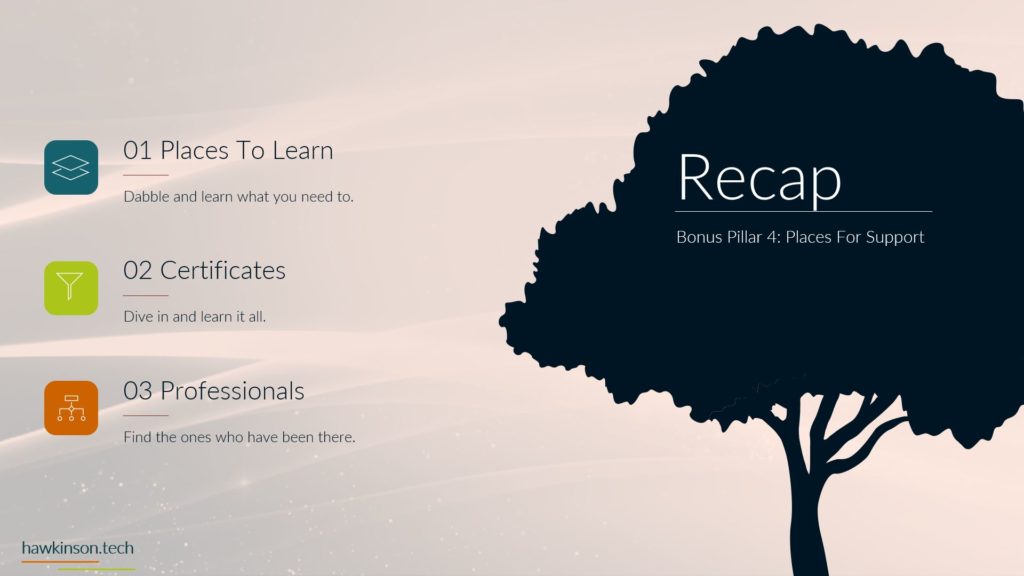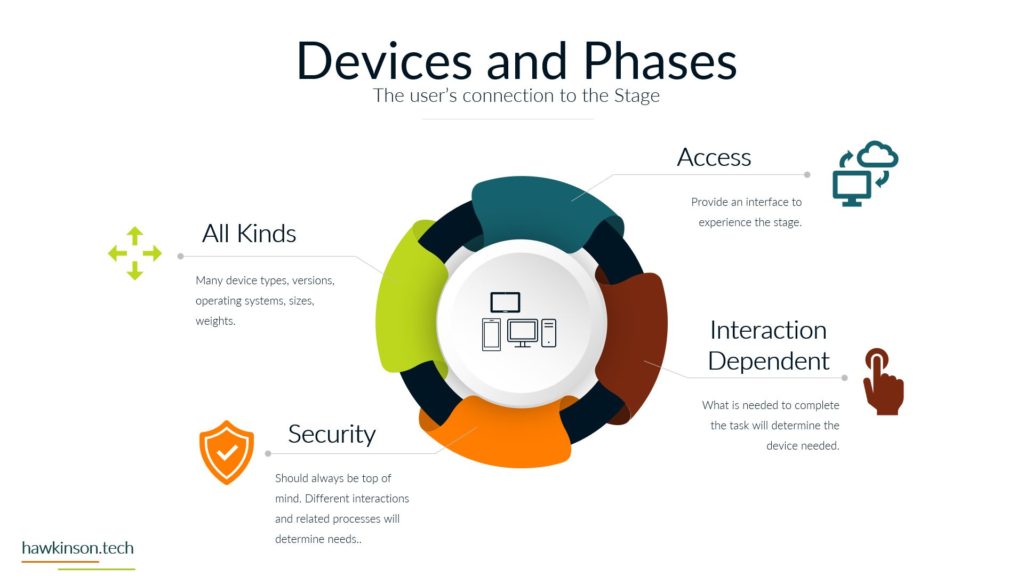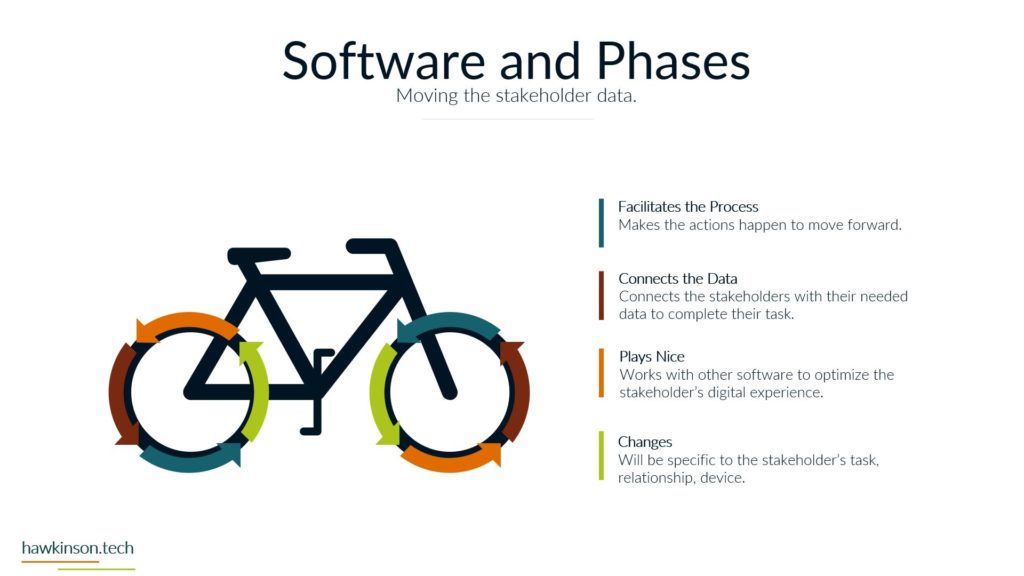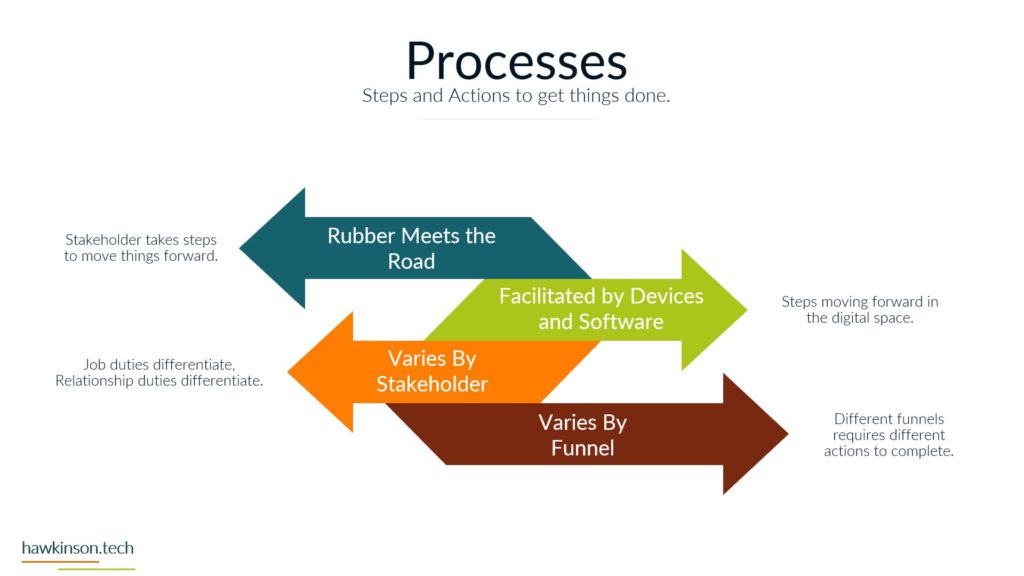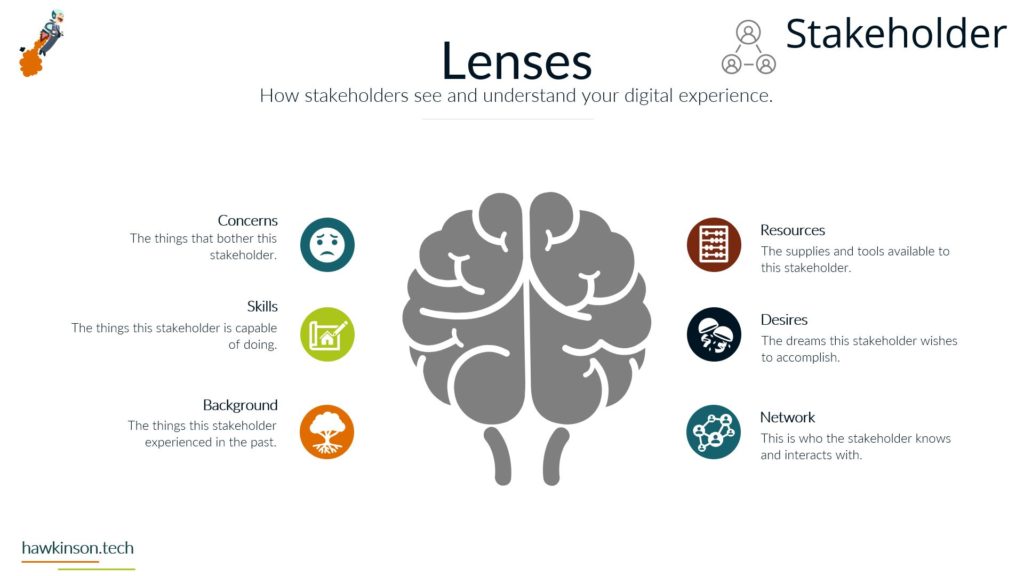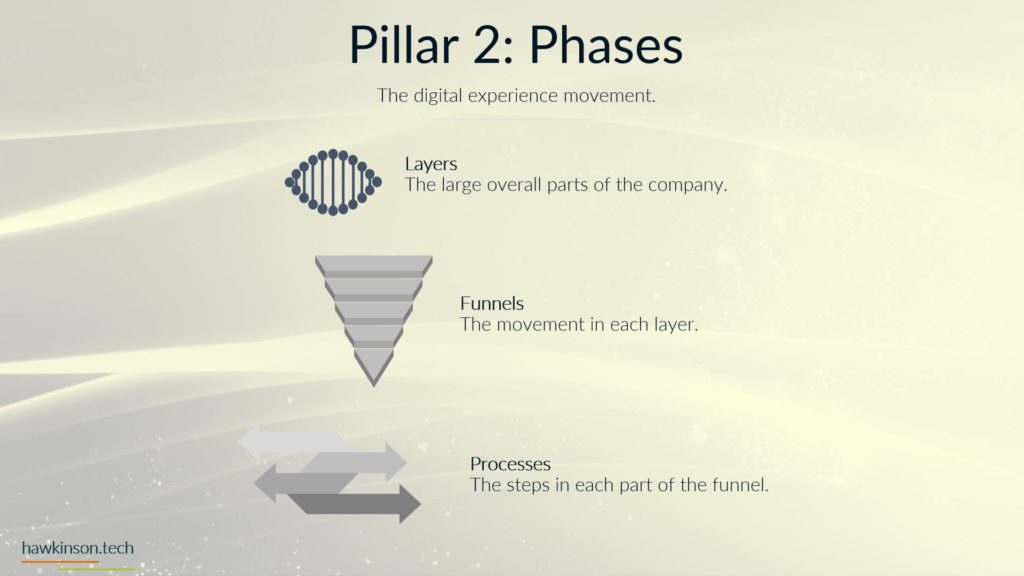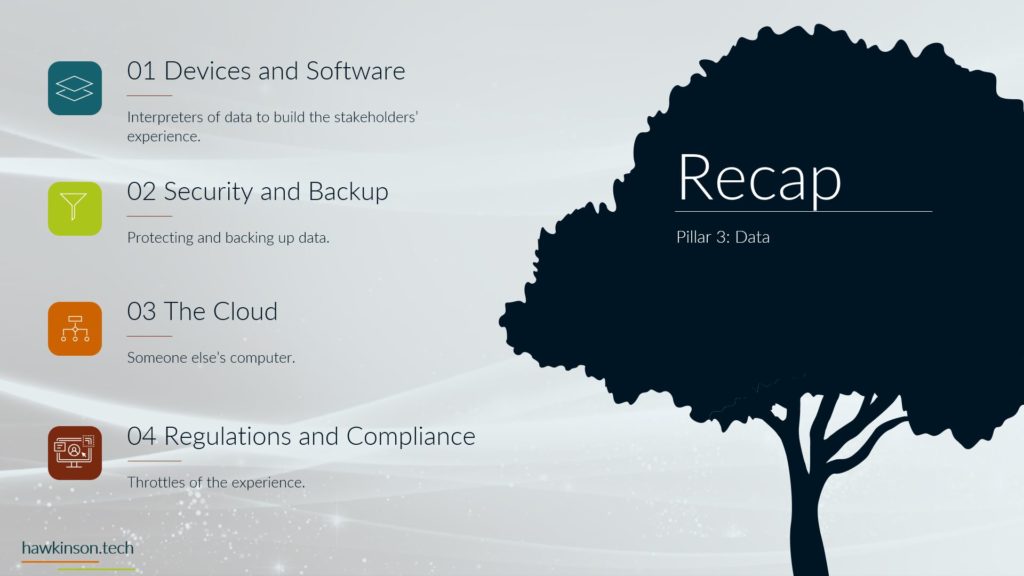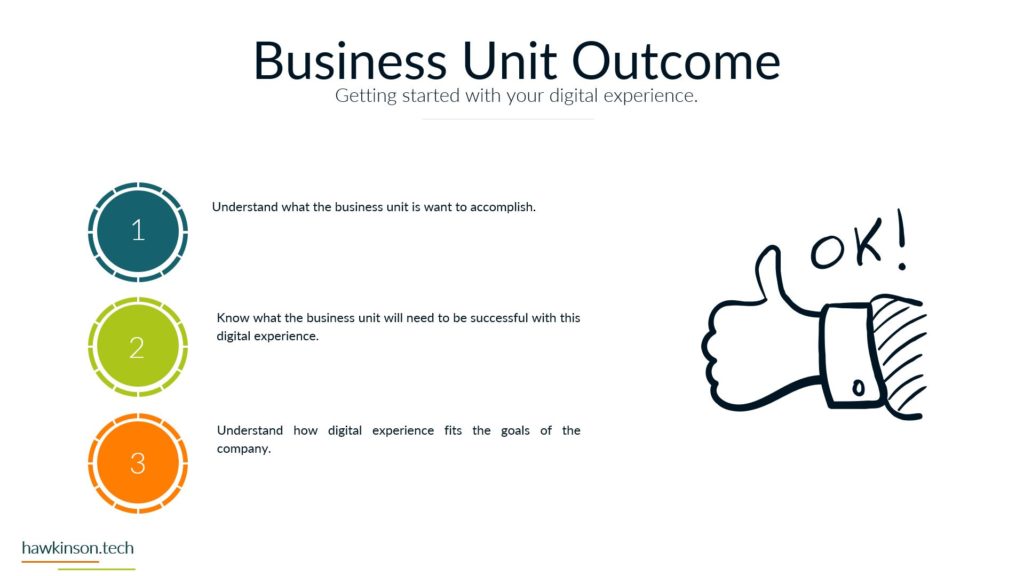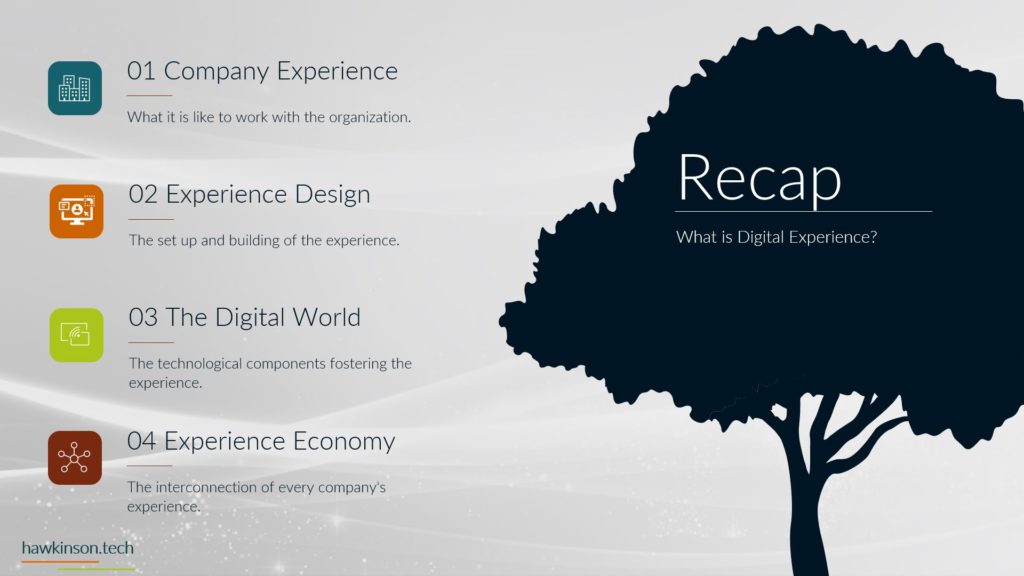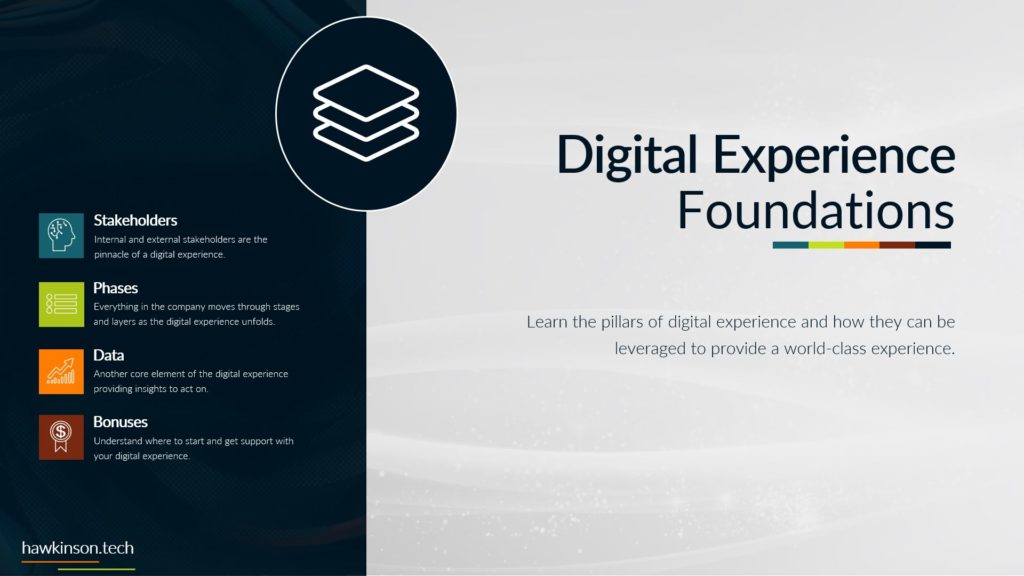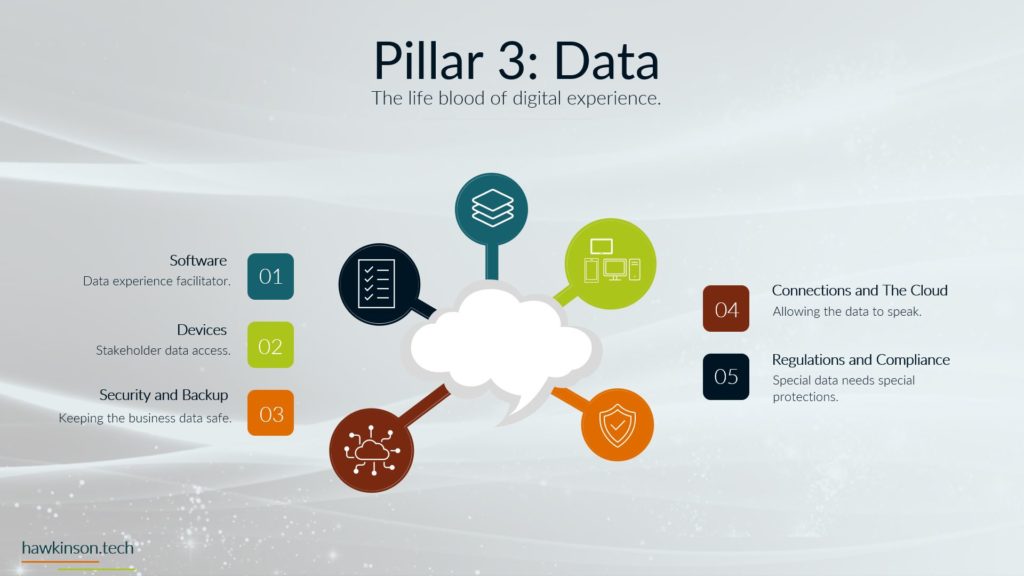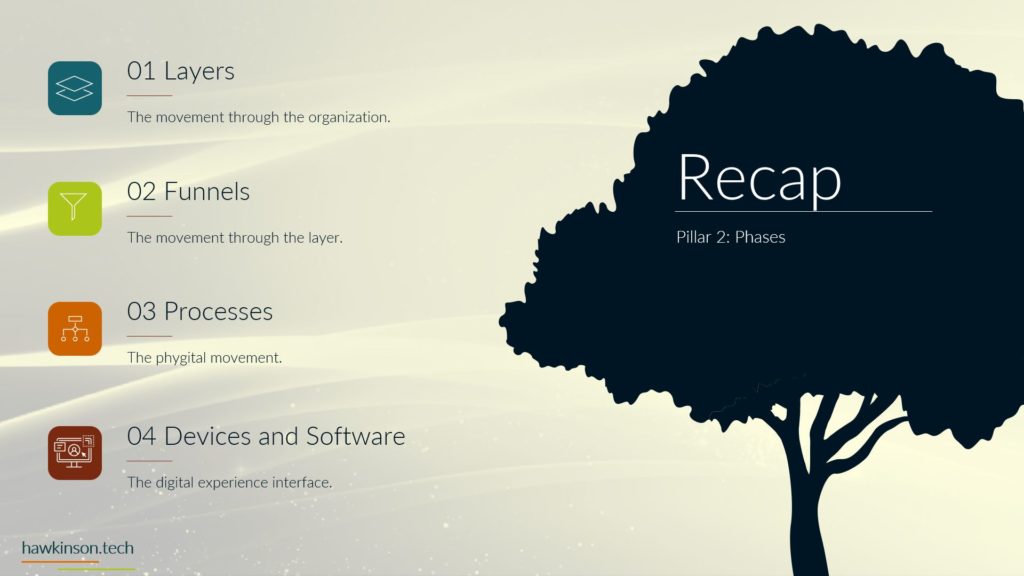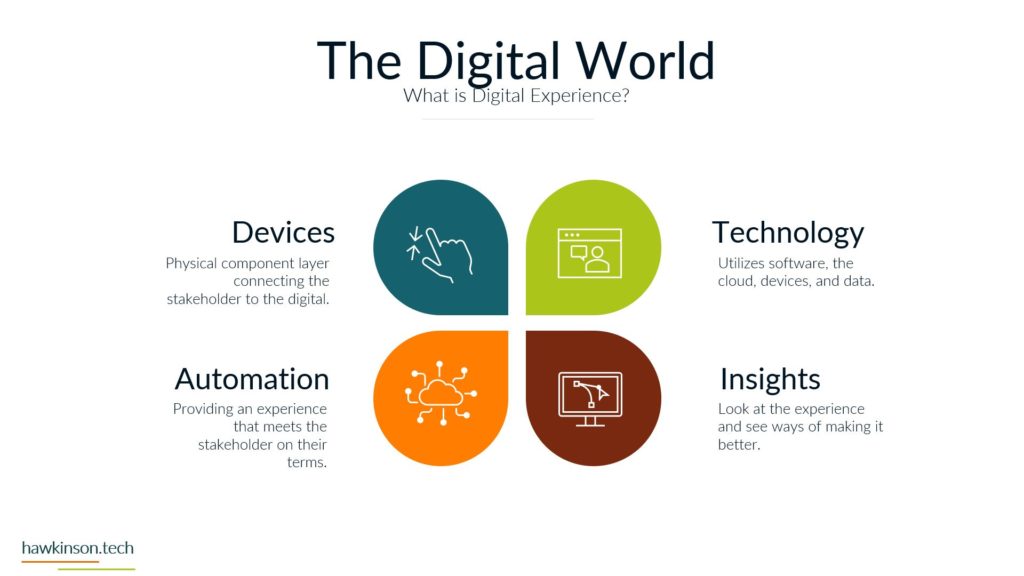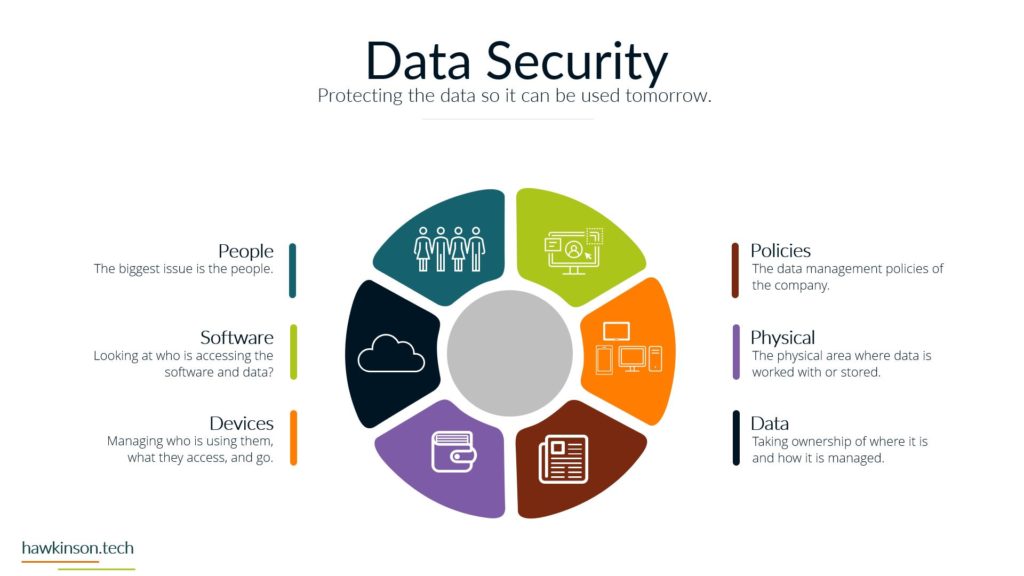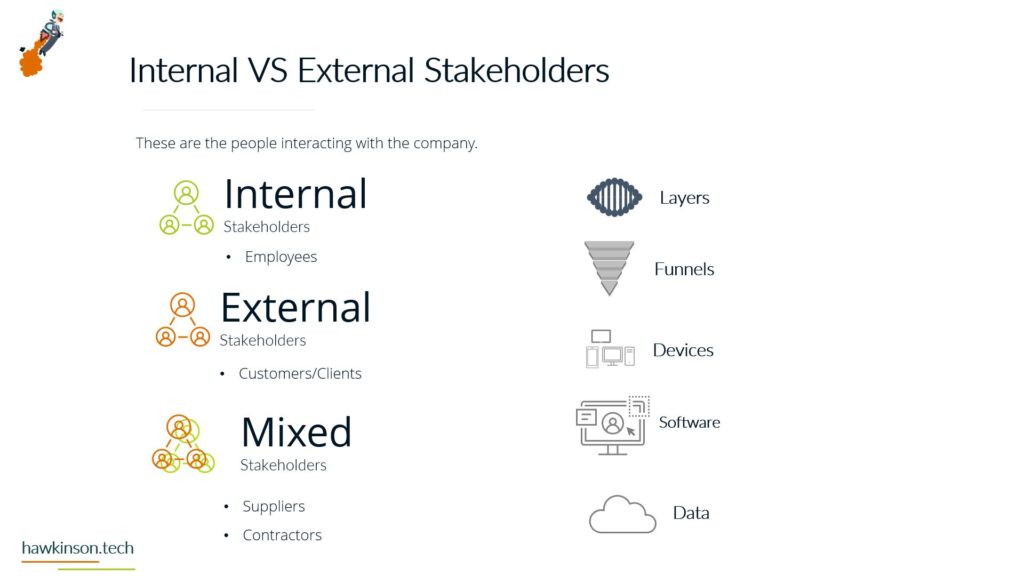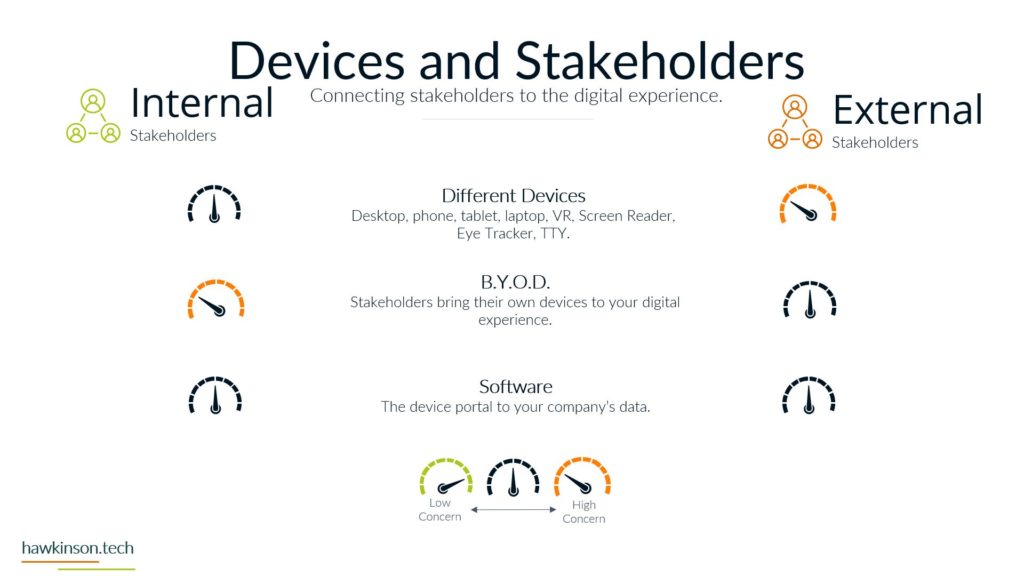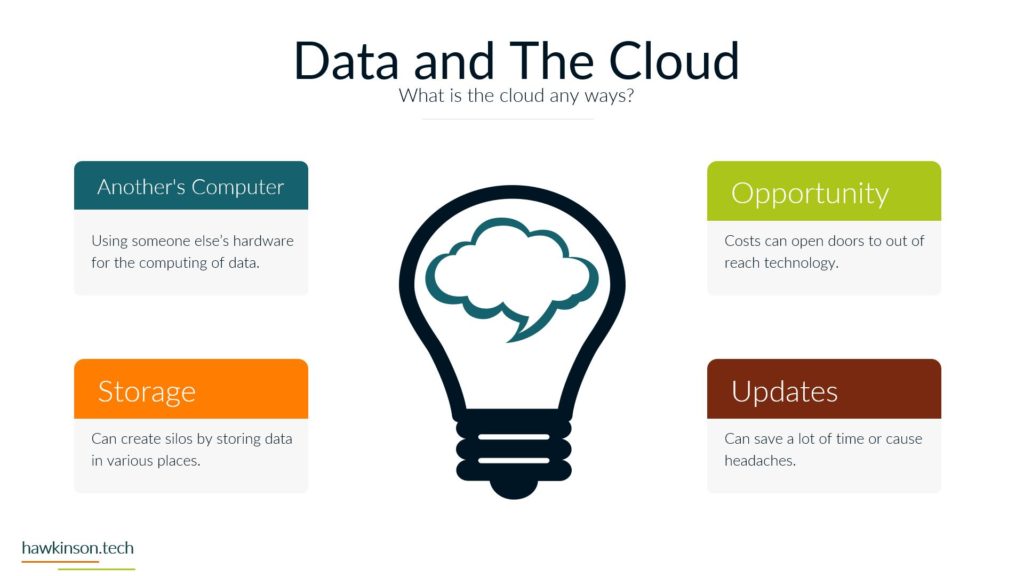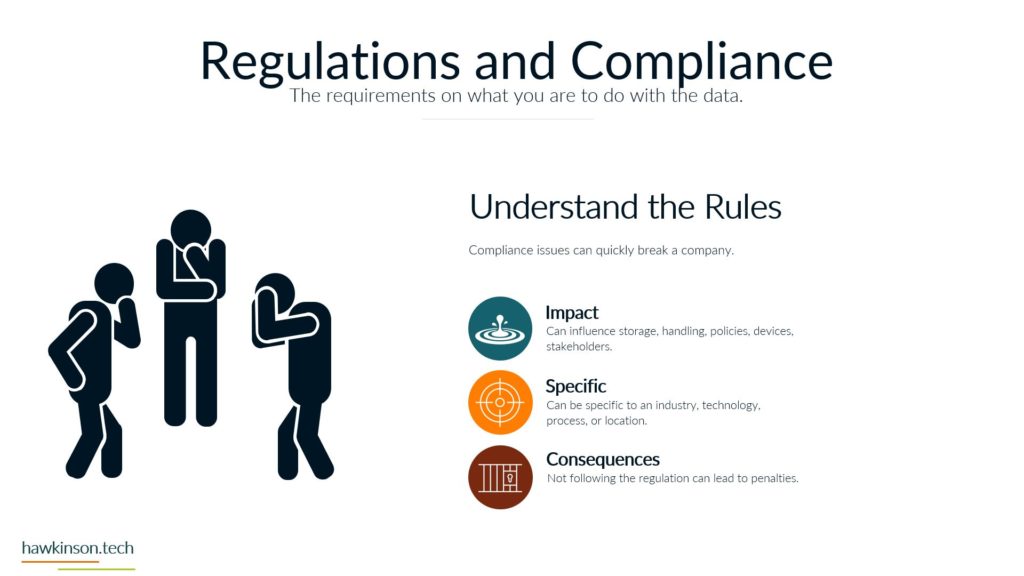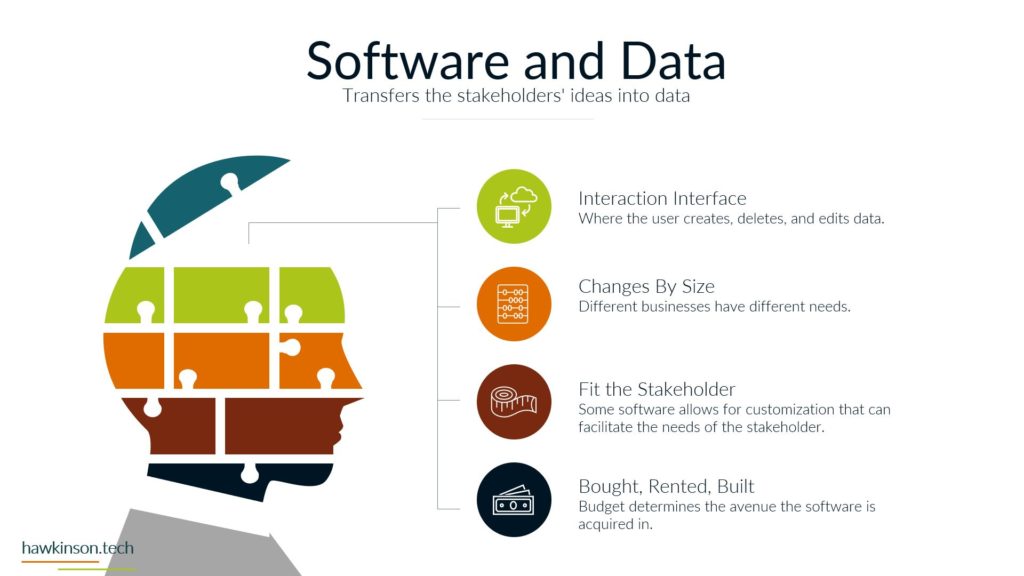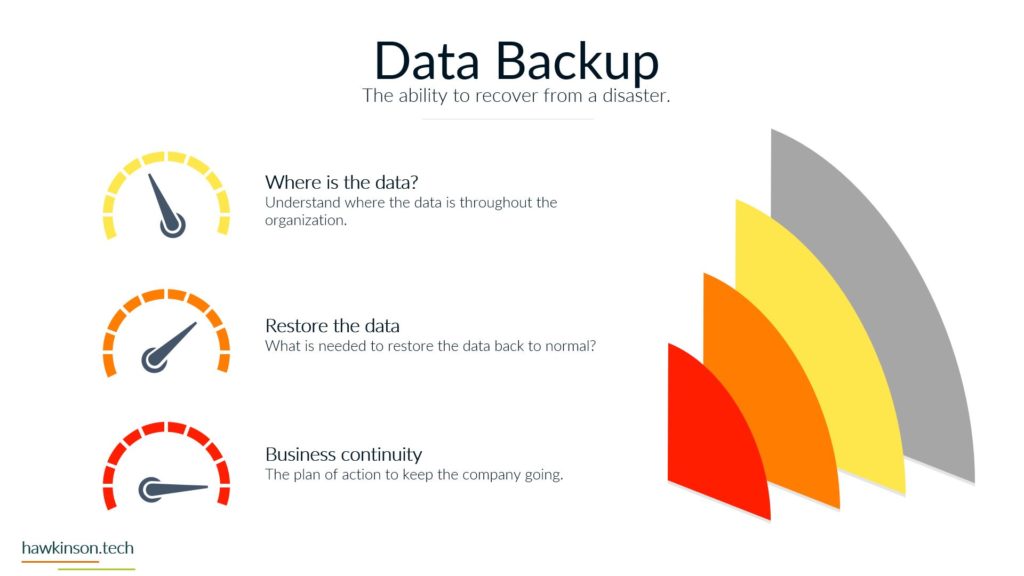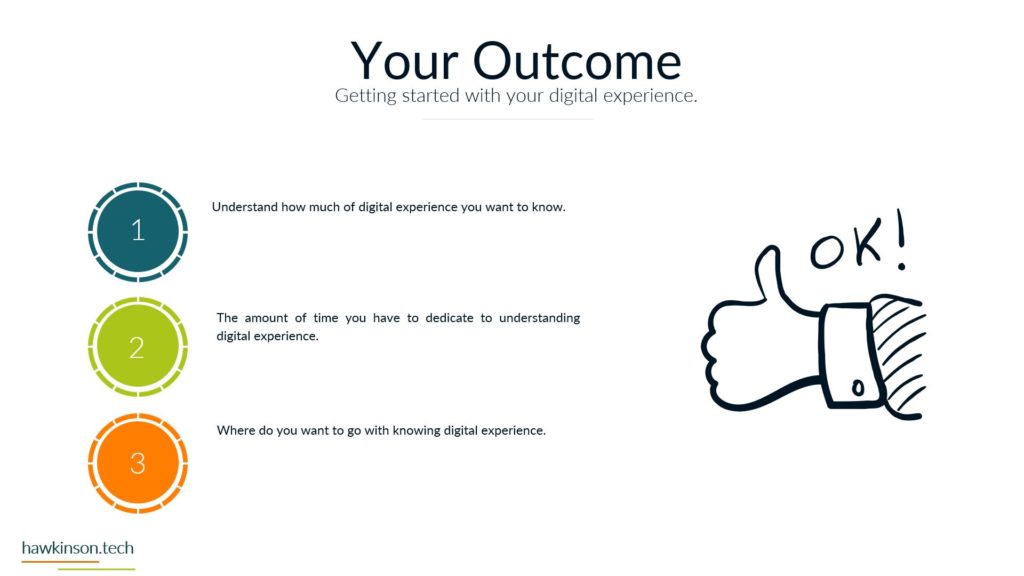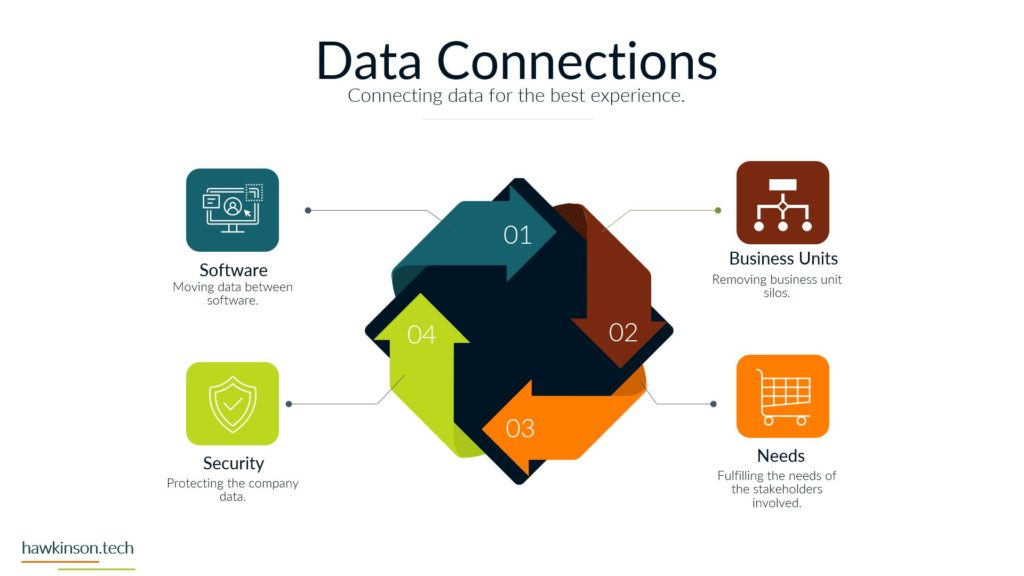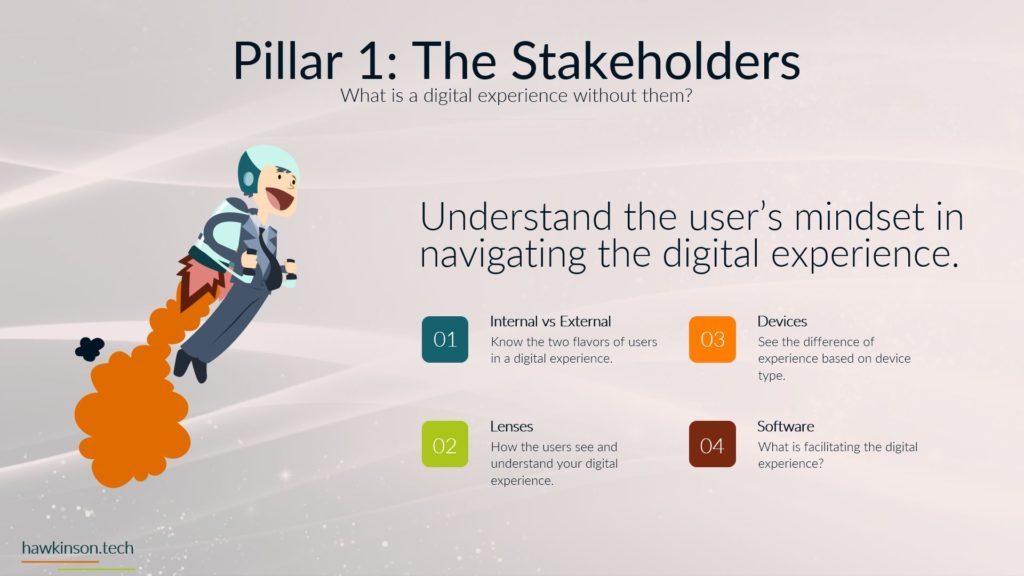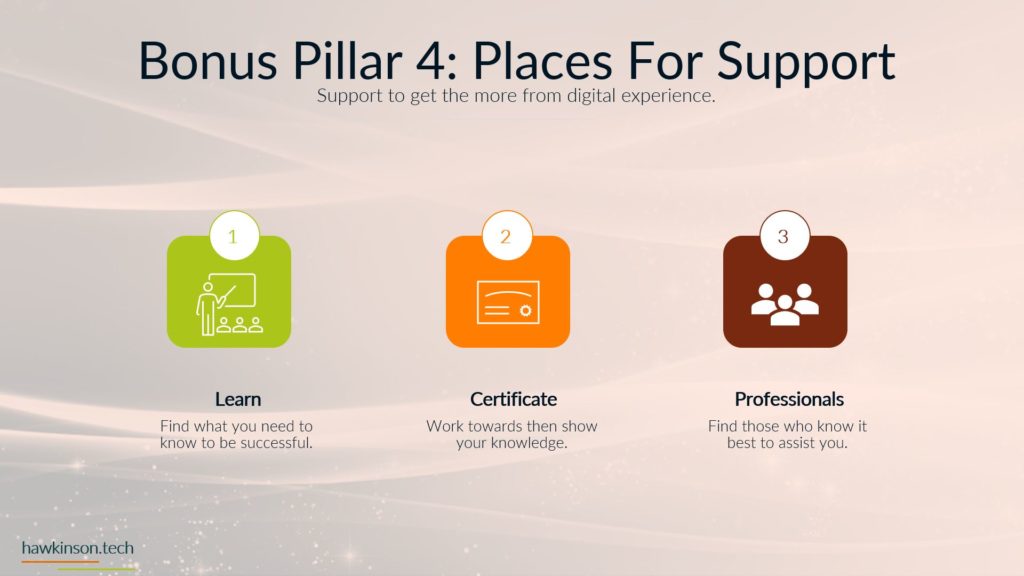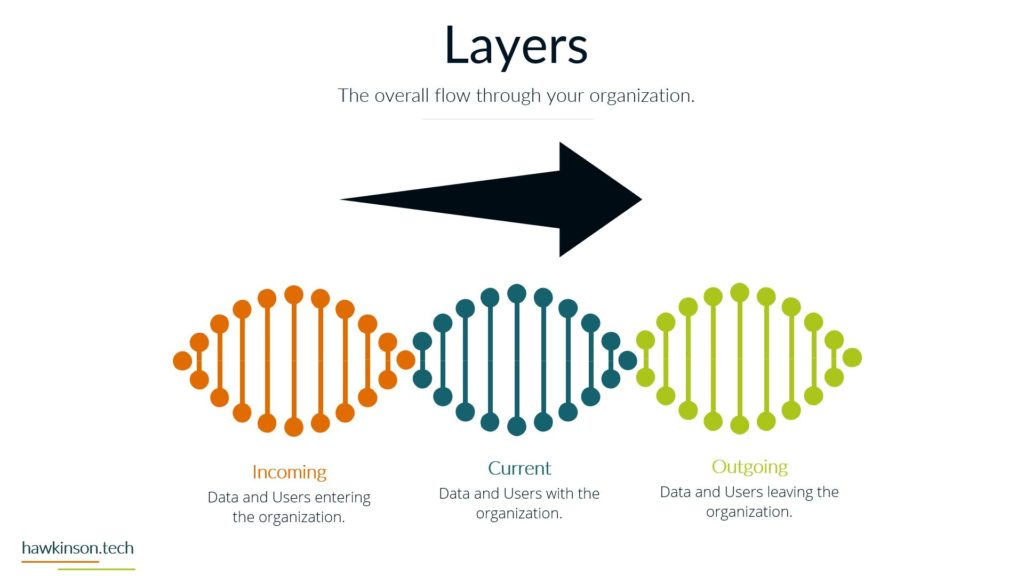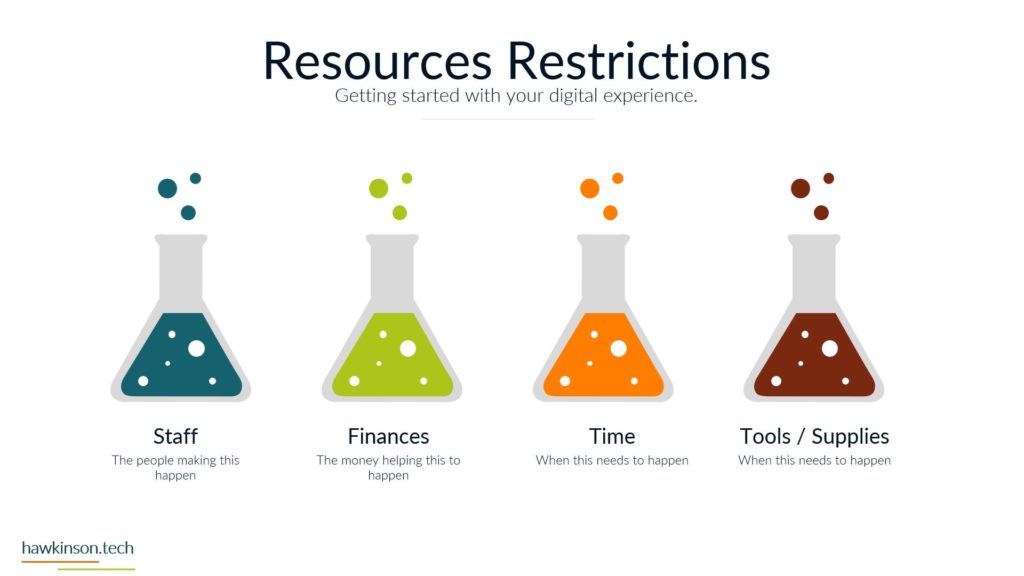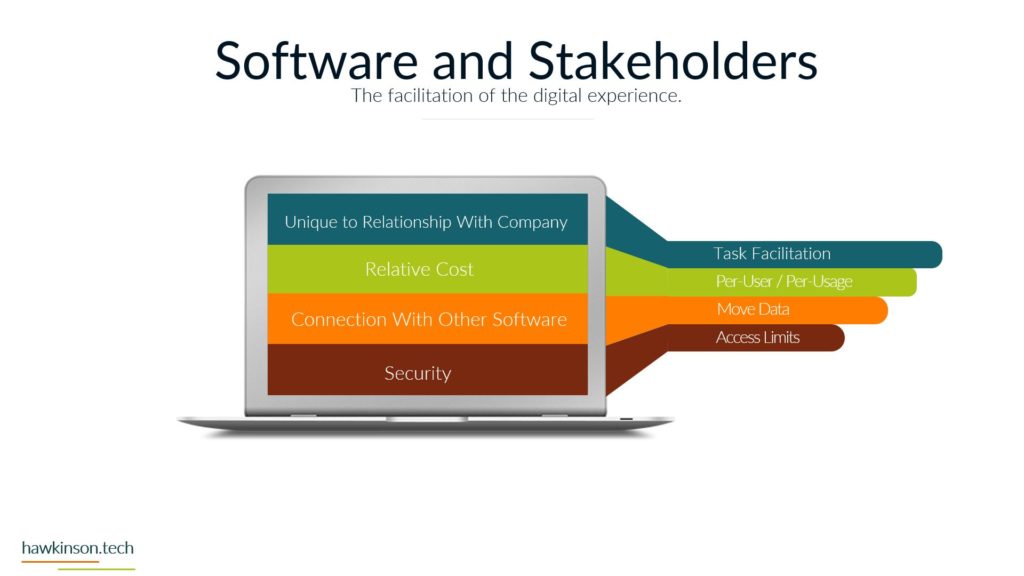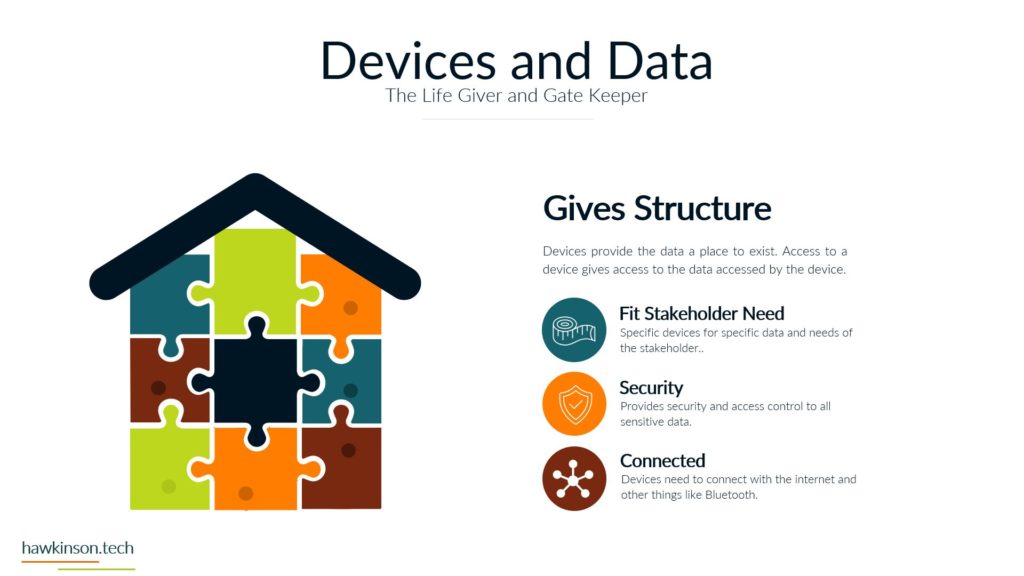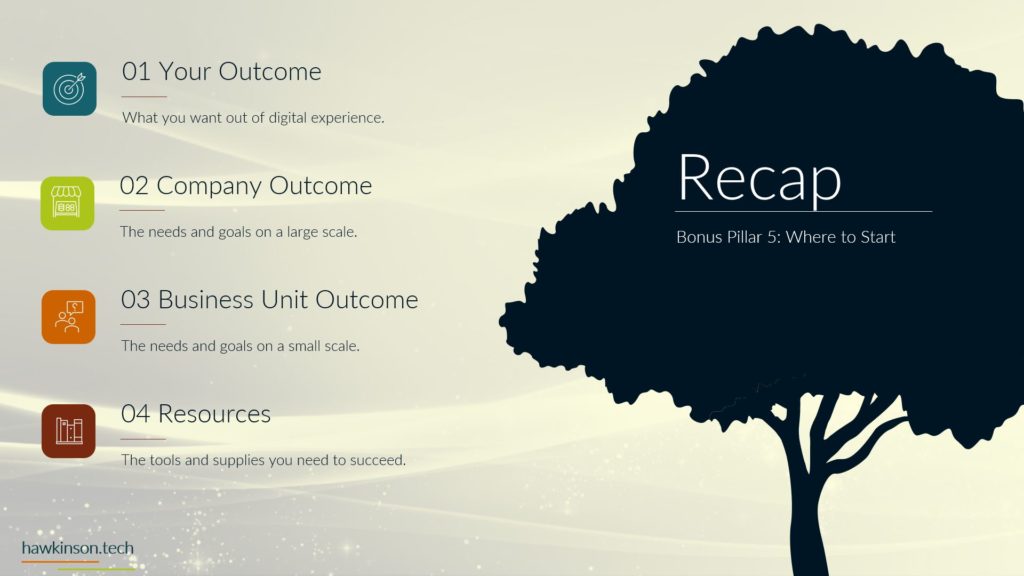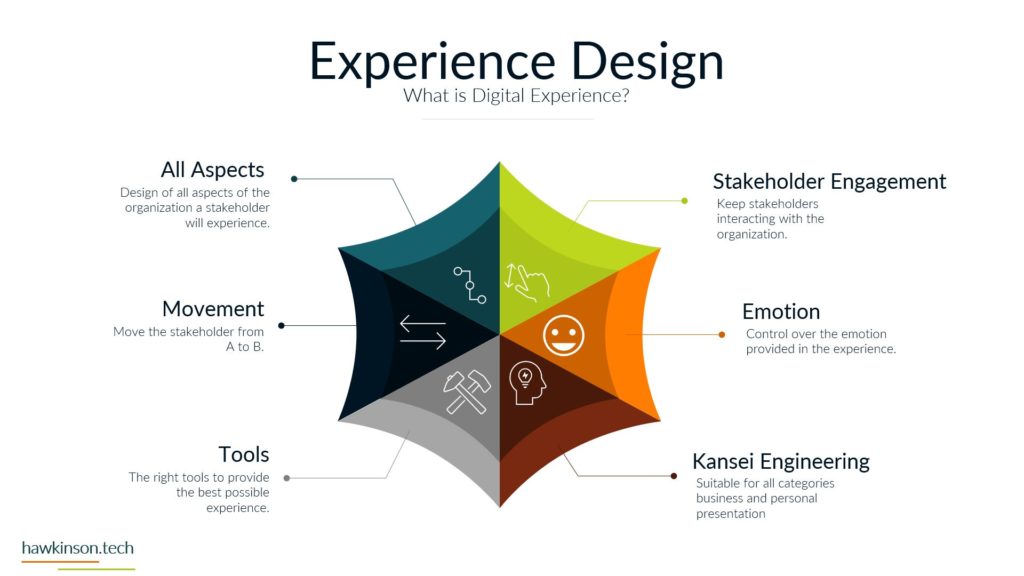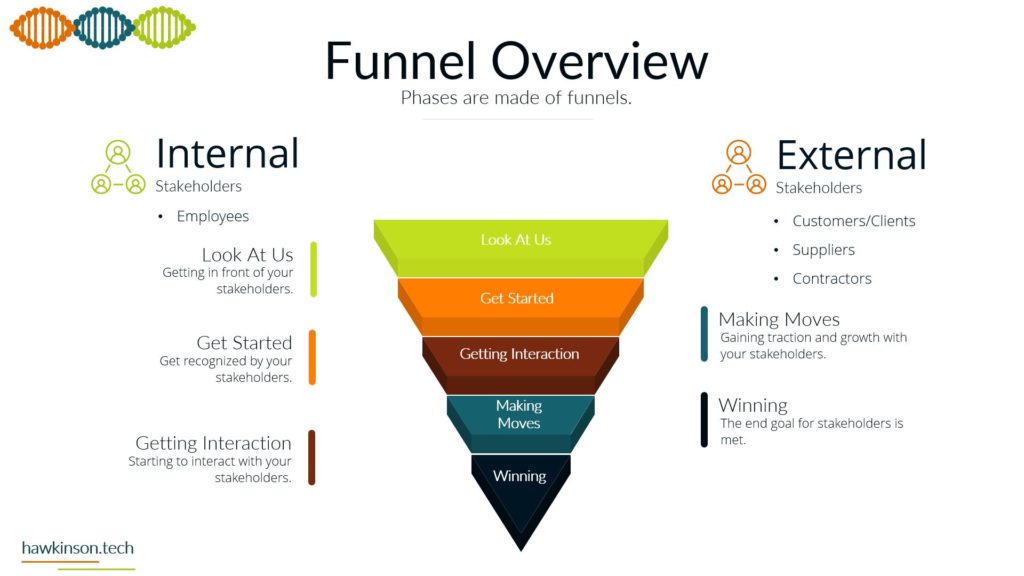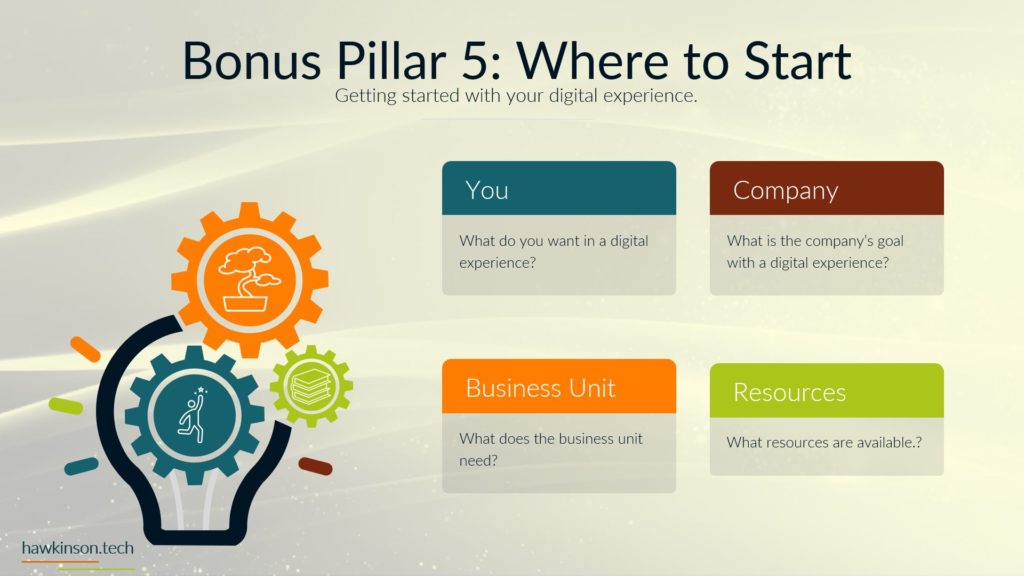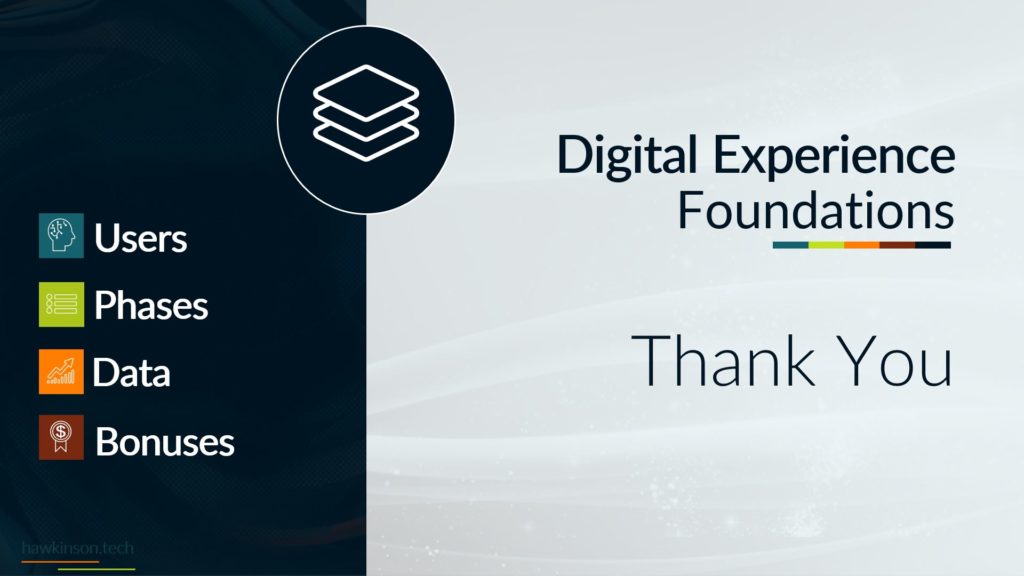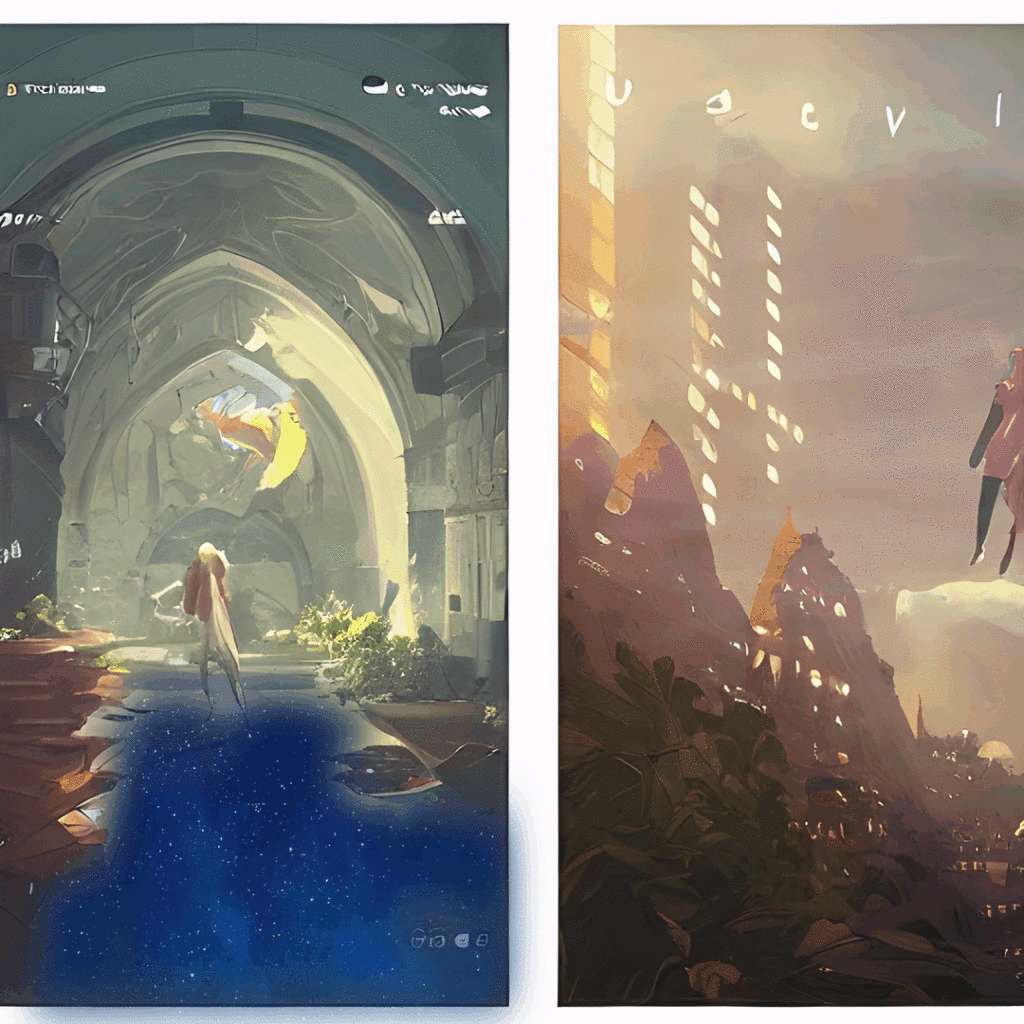In this video, we look at some psychology in how users think regarding a digital experience.
Digital Experience | Pillar 1 Stakeholders | Lesson 2 Lenses
Follow Me Elsewhere:
Play Video
Play Video
Alright, so now that we’ve looked at our internal and external stakeholders, let’s start looking into the way they think. So we’re going to look at lenses and another way you could look at the lenses would be heuristics. We’re calling this lenses because effectively we’re looking at the way that somebody’s thought processes and the psychology that they have and how that. Is going to influence the way that they work with the organization at a particular junction with the organization. This is going to be true of all internal and external stakeholders. They’re all going to have different lenses that are going to impact the way that they think and how they work with the organization. So when we’re looking at lenses, we can break this down into a few different parts that help us get a bit deeper at how these different stakeholders. You’re thinking, so the first thing we want to look at is their concerns. We want to know the things that bother them. What is it that kind of keeps them up at night? What is it that worries them? What is it that you know prevents them from moving forward? We want to know the things that they would essentially be worried about. We can then look to set up different things around these concerns for different stakeholders. Depending on what they’re concerned about, we can use that to either change our market offers and be able to work with them more efficiently. We could use it to change processes for internal stakeholders to make their job more enjoyable. Or to foster their growth better than the organization. The next thing after concerns is skills, and we want to know what it is that this stakeholder can do. The different capabilities that a stakeholder has will determine the way that they approach a given situation. And this is very true in a digital world when we look at some stakeholders and recognize that maybe they don’t have the capabilities or the understanding. And working with technology and working with devices. Then that can kind of set them up for a vastly different experience than other stakeholders that are maybe very fluent with technology. So we want to keep in mind the skills that these stakeholders have and kind of what we’re building with our processes and making sure that the stakeholders encompass the skills that we want within one of our business processes. We also want to look at the background, the background share very similar to skills. In regards to, you know, somebody having done something and understanding what it is, but the background could be so much more than that. There’s different things that this stakeholder has gone through. There’s different levels of education that they have gone through, and all of these pertain to a given background, which then determines the way that they’re going to interact with a given situation. So they’re able to draw off of that experience and be able to use that experience and how they work. Various things in the future. You know somebody again that if we look at the digital sign of it, somebody that has an extensive background with technology is more likely to have an easier time at picking up a digital company experience and working with it. But the same could also be true in the reverse if let’s say your company didn’t have any digital aspects at all. But depending on what you were having users do, their different backgrounds are going to allow. Them to either excel or be held back in those given situations. And so we want to be very aware of their background and what they’re kind of bringing to the table. That way we can foster experiences that meet the expectations of what we’re wanting to do. Resources is another thing we want to be concerned about when we’re looking at how stakeholders think. Resources is essentially covering what it is that these stakeholders have available to them. This becomes a concern because depending on what we’re asking the stakeholders to do, where they’re at in the process and what we’re expecting of them, the resources that they have available or the resources that they’re using. Can become very influential in how they’re able to accomplish a given task. This also means to take concern over the internal stakeholders and what resources we’re providing them and what we’re expecting the outcome to be. For example, let’s take away any digital signs. Let’s say we’re building a house. If we sent all of our construction workers to go build this House, but we didn’t provide them any tools to do so, then again, that’s a very different. Experience that us sending construction workers with very technologically advanced tools and getting a different end result and a different expectation with that. It’s a lot of this is the expectations is depending on what we’re expecting to get out of a particular relationship. If the stakeholder doesn’t have the resources to help them with that, then our expectations could be very unfounded and we could be setting people up. Failure by not understanding the resources that are going on with that particular stakeholder and the situation that they’re in. The resources that they have also determined the way that are influenced the way that they’re thinking about a given situation. Because if we’re asking them to accomplish some sort of task and we don’t provide them with the right resources and that changes the way that they think about the situation and then changes the subsequent behavior that they’re going to use. Approaching that given situation. We also want to look at the desires and understanding what it is that this stakeholder wants to accomplish. We can then use that in order to build out processes that maybe help that end result to be achieved a lot quicker. For example, if we have desires of our sales staff and they’re wanting to spend a lot of time and conducting sales calls and building relationships and their desire is to really foster these relationships in order to. Grow the company and their position with the company. Then setting up business processes where they’re entering a lot of data isn’t going to meet those desires. That’s not going to match those expectations and that’s going to lead to different sets of experiences and reactions in the business process than if we were setting them up to do what it is that they’re actually desiring to do. These same can be true for external stakeholders depending on what clients want or what suppliers. We’re looking for, we want to make sure that we’re matching those desires with the processes that we’re setting up in order to to provide better cohesion with the company and build a much stronger relationship with the given stakeholder and the organization. And now the last thing we’ll look at here in the regards to how we’re breaking down lenses is the network, you see the communication or the connections that a stakeholder has with other stakeholders. Will also determine the way that they see or think about a situation. For example, somebody that is able to rely on others to solve problems for them is going to approach situations differently. Also, if that stakeholder gets very used to having those resources and then all of a sudden they’re pulled away from them, then you’re setting up that stakeholder for a vastly different experience because now they have to change their approach and the way that they’re looking to accomplish. Any given situation and so their lens is drastically affected because the network that they have opens up different ideas of how they can exercise that network, ways that they can work with that network in order to bring about a given result and accomplishment. So want to be very aware of what their network is and how the interconnections of the of that network allows them to accomplish a given task or the way that it will. Influence their success in that particular task. Now let’s take a look at some of the other stakeholders just more in depth. So if we want to look at internal stakeholders and these are going to be again the stakeholders that are going to be like our sales reps or employees or warehouse workers, essentially anybody that’s directly working with the organization. So looking at our internal stakeholders and addressing concern, there is a great chance that they’re going to be concerned with things about like their job performance or making sure that. Their workload is good enough for them, you know, that they’re not being overworked or even underworked and feeling undervalued. We want to make sure that they’re, you know, getting paid properly, that we’re matching the benefit expectations that they have. See, these are all things that are concerning if somebody that’s looking to get a job, you know, because if they’re comparing, say, your organization to another organization, they may be looking at the way that pay is different, the way that benefits are different, and all of these concerns then. You went to the way that they experience parts of the organization, and that’s not to say that you know somebody’s going to do poorly because one of these concerns isn’t being met, but that can be a reason as to why that stakeholder might not give the absolute best job performance. You know, in some cases they may not feel as motivated to make things happen or to work in certain situations, but instead they may find ways to get out of that. Where they may find ways to even just go work somewhere else that is able to address these concerns and provide them the ways of getting around these concerns. Or maybe they have processes in place that make these concerns obsolete and so they’re they’re fine with that. So it’s just it’s a matter of making sure that what we’re doing is not necessarily bringing these concerns into a position that highlights them, for example. If we were to set up some sort of internal process where maybe we just added massive amounts of workload to these stakeholders, well, then we want to be concerned about the duration of that workload. What’s it going to do in the long run? How’s that going to impact them and their job performance? Because if that workload was to stick with them for a significant amount of time, that could mean that their job performance starts to fail or the things that they’re looking to do with the company maybe start to slow down and they. We don’t quite take as much advantage of different opportunities just because they don’t believe it’s worthwhile. But if we can kind of match that workload while also making sure that we’re providing them the value that they’re looking for, then we can provide quite the opportunity and experience for a given stakeholder. So with skills and looking at our internal stakeholders, this is going to determine how they’re able to take advantage of the situation. So we’re looking at internal stakeholders. We have things like communication, their technology skills, their writing skills, maybe any leadership qualities that they exemplify or the ways they go about setting goals. But these and many others, there’s so many skills out there that somebody can learn. These skills will impact how they’re able to. Work in the given situation, how they’re able to move through something or the different things that they’re able to see, if you will. Because somebody, for example, that is great at communication might be really good at standing up to people in a given situation, versus somebody that isn’t very good at communication might not know how to handle them. As a result, they’re both going to have different effects that come out of that situation and face different. It’s not because of these skills that they’re bringing about into that particular situation. Similar to skills is the background and looking at just different companies that they work for, the different places that they’ve been, places that they volunteer at, different projects that they may have worked on. So all of these bring about different relational ideals and psychology that they’ll bring into that situation. For example, if we had two different people and let’s say. One came out of a manufacturing company and another one came out of a, let’s say, window cleaning company, and we were asking them to approach a different situation. Well, they’re both going to have different ways of looking at that situation and looking at how to progress through that situation based on the different trainings that they got from that other company or what their day-to-day work was or the way they were taught to solve problems at that company. So then that impacts. Your organization and the way that they’re going to solve problems and the way that they’re going to work with customers and the way that they’ll move forward with the customer. Another way of looking at this is say we had a customer service situation and we’re looking to bring people into just doing customer service costs or calls and handling those situations. If we have somebody come in that was you know, some foul mouthed construction worker, let’s say they’re going to handle that customer service. Situation vastly different than somebody that has worked in a call center. They’re going to have different skills that they were able to foster through that past experience. And they also have different expectations about what was allowed to say the construction worker was, you know, like they didn’t get hindered if they used curse words at work, which is kind of part of being a construction worker, whereas that was something that was not accepted at all in a customer service situation. So they’re both. Going to act differently in a given situation based upon that background. And so as we build out these situations or build out business processes and bring things into a digital world, we want to be concerned about the background that internal stakeholders have and what kinds of expectations the business and the organization is expecting of these stakeholders. Resources is another massive one, especially for internal stakeholders, because as an organization we have complete control over most of these resources. We’re able to determine what resources a user is going to use in a given situation. And a lot of that is because as the employer, we’re expected to provide them the resources that are needed in order for somebody to be successful at their job. Those resources then determine the expectations that we can have. As an organization, say if we’re providing people with the top notch, absolute best technology, then we can have one expectation for how things are fostered or brought about through the company. Then we can, if the expectation is just that they have to work with these very mundane, you know, very dated tools, that’s going to, that’s going to mimic a different result. The more advanced tools will likely allow us to provide something that is also stained in the art, whereas the old tools may allow us to provide something that isn’t that great but meets the situational needs. Those that we can tie into a whole different story of external user expectations. But nonetheless, the resources that we’re providing to internal stakeholders have a massive impact on the expectations that we can have of those stakeholders. In a given situation. So we also want to look at their desires. We see with our internal stakeholders, they have desires around their salaries, around where they’re going with their career, the different experiences and things that they’re able to generate and foster with the particular organization. So if we have processes in place that aren’t meeting those career desires or where they’re looking to go, then there’s a good chance that these stakeholders may start to drop in their performance. We may have stakeholders that start dropping out of the company altogether and moving on to other organizations, which then gets into a whole resource allocation issue that we can have. So we want to make sure we’re working with their desires and that we’re meeting these desires as we’re building out different processes and putting things into a digital space. And then with internal stakeholders, we have their network. So we’re looking at the different coworkers that they communicate with, the friends and families that they have in the organization and or even outside of the organization. And the way that they exercise professional contacts or the suppliers that they communicate with every single one of these parts of the network is going to impact the way that they work within the organization. So for example, if we’re looking at an internal stakeholder that is very well versed at working with all kinds of different levels of coworkers, they are likely to have a better opportunity at accomplishing things. However, depending on the culture of the company, even if that Co worker was able to exercise those relationships, but maybe things were very political, then that’s going to impact the way that they’re able to accomplish. Thinks the results that they’re able to bring about and overtime that will also impact where the company goes and the way that the company is able to move forward or even not move forward with different things. There can also be different pressures that come from these networks. There can be different expectations that come from these networks. So say we have somebody that has a lot of friends that are upper executives and that is going to bring about different social expectations that we would get. Would somebody that was maybe just a retail associate and the friends that they hang out with, all of those then impact how they kind of carry themselves, the things that they do at work and the way that they might move forward with an opportunity or who they even reach out to to get help. And then that person then also influences the results that go into that situation. If somebody’s reaching out to coworkers that don’t have the best skills, then that’s going to bring about a vastly different situation. That coworkers that you know are the top in their field and are able to or have experience a variety of very different things and worked on massive amazing projects. So that’s kind of some things to look at with our internal stakeholders and the lenses or the heuristics that they use to look at a given situation. So now let’s look at our external stakeholders and how these external stakeholders might look at or be concerned about any given situation. Now one thing before we get into these, you might start to see some overlap and that’s because we’re talking about people and people tend to have overlapping desires or concerns about things. And so some things may overlap here, but given their different relationship with the organization is going to kind of bring out some subtle nuances for those particular situations. So if we’re looking at external stakeholders and looking at their concerns, so in this situation, we’re looking at clients or customers of the company. We’re looking at those effectively that have come to the company and have some sort of result that they’re expecting to get. When working with the company that could be through buying a product or maybe purchasing a service. Nonetheless, the goal of the external stakeholder is that they have come to a company with some sort of situation and they’re looking to get from A to B. And so we’re trying to provide them an experience that helps them move from A to B. So we want to make sure that we’re addressing those concerns that whatever concerns they have in that stage of moving from. To me or how well they need to be prepared to move from A to B. But we’re addressing those concerns and we’re providing an experience that matches those concerns and shows the degree that we are supportive of their concerns and that we’re able to help them work through these concerns and get to their desired result. And so with that, we have different things that we can align. For example, the different stakeholders or internal stakeholders that they work with are. Going to impact their concerns and how well they’re being addressed. The business processes that we have in place and how well we’re not well refined, those are will impact their concerns. Somebody that’s coming to work with a company and has massive expectations about making sure that XY&Z are addressed. But if the stakeholder they’re working with keeps dropping the ball and not addressing those or has to keep backpedaling to come back and address them, that’s going to not address. Concerns. Or it might address concerns in a very negative way, which is then going to impact the relationship that this stakeholder has with the organization and how they move about through and with the organization. With external stakeholders, we do also have some concern on their skills. Depending on the organization and the the vertical or the market that the organization is in, these skills could vary quite drastically. Even in one company we could be working with people in all striations of different skills. See, not all companies are made equal. Not all people that work within companies are the same. So that means that different skills and. Different groupings of skills and different professional mentalities all vary amongst external stakeholders, and that can even be true depending on the positions of the people we’re talking about in an organization. If, for example, we’re trying to sell something to an external stakeholder and we’re only addressing, you know, upper management or we’re only addressing, you know, maybe people that are at the associate level that’s going to bring about different sets of skills and how they’re going to talk and. Work with us and the different expectations that they’ll have based on these skills and what they’re expecting to get out of a situation. You know, depending on somebody’s professional level 1 presentation could look like the most amazing thing to somebody. To another person, it could look very mundane and look like something that, you know, that just fits their expectations. But it’s nothing special. And all of that is based on the skills that they’ve acquired. So we really want to make sure. That forward the experience we want to provide, that we are working within the skill sets of the external stakeholders and fostering the things that we want to come about. Our stakeholders are also going to have a background and that’s going to determine how they’re going to interact with the organization. Our external stakeholders are going to bring about different industry experience, different professional experience, different education backgrounds, different skill sets, different methodologies, and that’s going to determine the way that they interact with the organization. It’s going to impact the way that they see a given situation. Or the steps that they take in that given situation. Somebody with one set of experience may look to address situations vastly different than somebody that doesn’t have a lot of experience in a given situation. And that’s going to determine the way they think and relate to the organization as a whole based on that background. Then we have the resources we want to understand the supplies and the tools that are available to a particular stakeholder. For example, depending on what the organization does or how it’s built, they’re what kinds of end results it’s looking to foster. We want to make sure that stakeholders have the resources in order to take advantage of that. So say we’re looking at a digital place and this can be just a very basic example, but if we’re building out a digital experience and we’re providing that experience to people that don’t have access to any type of device, that’s been very hard for them to take. Manage of that experience, in fact, they’re just not going to be able to. Likewise, if we sold, say, a boat to somebody that had no way of getting it monitor, that’s going to be a vastly different experience than somebody that had a boat that had water. So we want to make sure that the resources and the tools that are available to a particular external stakeholder are there. That or at least the ones that are needed to go about. The experience that we’re looking to provide that they have access to and are able to take advantage of those supplies and resources because that’s going to impact the way that they experience, expect and move through a particular situation. The desires is a massive one, especially for external stakeholders in terms of marketing. This is why they’re coming to you. This is that end result that they’re looking to accomplish. So if we’re unable to fulfill that end result or maybe not able to do it to the depth of their experience or their expectations, then that’s going to impact the relationship and the experience that they derive from working with the organization. So we want to make sure that the. Desires that they have and where the stakeholder wants to go that we’re meeting those. This can even come down to things like sales and customer service. If you have sales reps that you’re training to essentially promise the world and then try to come back and you know, recuperate that, that can be a very interesting situation that you could put yourself into because you know if you’re able to come back and create post emptively able to actually make. That happened then. Sure, maybe you’ve fulfilled the expectation of what that user was looking for. But if they have very stringent experience, kind of expectations based on their background, based on their skills, their concerns and resources, and you’re kind of backpedaling to fulfill something if it’s not within their desired range, so to speak, that you’re not going to be able to bring about the experience that they’re looking for. So you really want to make sure that. They’re meeting the expectations of the desires that these external stakeholders are looking for in order to help bring about the best way of them working with the organization. Then all of our external stakeholders are also going to have a network. They’re going to have people that they’re going to talk to, people that they’re going to work with. So when it comes to bringing about an experience, that means knowing that these stakeholders are likely to talk to others within a particular space and a particular field. So depending on the experience that your company is bringing about the way that you’re working with users or the mentality that your company is fostering. As people go out and work within their network and communicate with people, that’s going to start to impact the way that others also start to work with the organization. The network is also a way of understanding how this person might solve a problem or the way that they might address concerns with the organization. If somebody who has a strong network within a particular field, maybe relative to your organization when they’re working with your organization. They’re very likely to start talking to those other professionals about their experience and then based on the relationship with those network or with the professionals in that network is then going to determine the way that they’re looking to create a desired experience result from your organization. So for example, if you are a medical supply company and maybe you’re talking to a technologist about that, technologist talks with a lot of doctors. So they may not have be super up-to-date, let’s say with the acumen from the industry. However, they do have a resource of people that they can go back to and. Then talk to about these different expectations and they can use those people to then kind of Fact Check anything or see kind of if they’re in line with the right experience and be able to use that to get feedback and a deeper understanding of what type of experience they would look to want to have or make sure that they’re getting an experience that they want to have. So the network can be an interesting way for people to go through and kind of Fact Check. Or make sure that the things that they’re getting are what they should be getting the same time too. It can also kind of be a telephone game and allow people to go through and kind of spread what your representation is in a particular network as well. Alright, so now let’s take a look at the kind of mixed stakeholders. So this is a very interesting set of stakeholders. Our mixed stakeholders are likely to be suppliers. They may also be contractors. Essentially these are people that work with the organization likely in some sort of capacity that is helping the organization. Reach its desired end results, but are probably not an employee of the company and that’s why suppliers and contractors can be a good fit for these kinds of external and mixed stakeholders. So we want to look at their concerns as well. We want to see what it is that you know kind of they’re expecting to get from the organization or kind of what their fears are if things don’t go right with their relationship with the organization. So for suppliers this could be things like moving. Enough product or goods or services through the organization for contractors that can make sure that they’re able to fulfill the contract and meet the expectations of the company. These mixed stakeholders are also going to have a variety of skills. You know, not all contractors are going to be the same. Not all suppliers and the individuals sent by the supplier to work with the organization, all of that is going to be vastly different. They’re going to have vastly different skills that they bring from just all of their different professional backgrounds. And so we want to make sure that we’re addressing that. So big thing here is that somebody that was sent to work from the supplier. To work with your organization might not have the same sets of skills as somebody else sent from the same supplier. And so we want to make sure that our experience and the expectations that we’re providing are encompassing them. Or if we have very stringent expectations that we have processes in place to make sure that the individuals we get from the supplier meet those expectations with these mixed stakeholders, we also want to. Be aware of their background. Their background is going to carry with them different accomplishments, different work that they’ve had or even different organizations that they work with. So one of the things that’s interesting with these mixed stakeholders is that they likely work with a variety of organizations that are similar to your organization, and so that’s going to impact the different informations. That they’re given the different processes that they’re brought into because it becomes this interesting situation where depending on what they’re brought into with the organization may open them up to having different pieces of knowledge that can be used with some of your competitors. You know, it’s not like they might be directly malicious of just mining information from you to send to somebody else, but those things can be brought up and other conversations and so it. Becomes this. It becomes this balancing act as to what kinds of things are we going to provide to them or how is the organization going to work with them depending on who else they work with or what else they have done and how we can work with them in a particular opportunity. One of the other things here too with kind of some of these mixed situations is to the degree of effort you want to put in and training a particular individual or helping them to be super successful. Because somebody that’s a contractor or somebody that’s from a supplier, you might not have as strong of a relationship with in your organization as your own employees. And so there’s going to be different ways that they’re able to work with the organization and what they’re able to see within working with the organization based on the background that they’re bringing to the relationship. The mixed stakeholders are also going to have a vast variety of resources that they’re able to work with. This can mean resources that are provided by your organization that allow them to accomplish a particular task. It could be resources that they bring from their supplier or if they’re a contractor, then it could be resources that they provide themselves. And then all of these different accumulation of resources from these different places is going to impact the way that they’re able to. Look at and think about solving or working with a particular situation. Mixed. Stakeholders also have their own sets of desires. They have the own things that they want to succeed at. Contractors want to make sure that they’re doing the absolute best and fulfilling that contract, so that way they’re able to go out and get more work in this contract next year. They want to make sure that they’re able to fulfill and foster those desires so they can keep getting more work. A supplier likely has desires of making sure that they’re providing you with the right. Expectations of of products and services. So without it can be making sure that the products and the services are delivered timely, making sure that they’re of the quality that the company is looking for. And so we want to look at the different external or mixed stakeholders and the way that these mixed stakeholders, the way that they’re desires influence their relationship with the company. We want to know essentially what it is that they want to. Out of this particular relationship with the organization, some mixed stakeholders are also going to bring with them their own network. And this network is going to comprise of their professional connections, just people that they’ve met doing the jobs that they’re doing and who they’re working with. This connection or this network is also going to be people that are mixed from your organization and their own organization. And all of that is going to determine how they’re able to solve problems. Is when something arises, they might reach out to somebody in their own network, which could be somebody in their own company to solve the problem. Or there might be people within your company that they reach out to, to solve a particular problem. And so then that determines how they see or how they want to work with a situation based on kind of the other support that they can get or the other resources professionally and through people that they’re able to utilize and solving. A particular problem or moving forward with the organization. So next in this section, we will dive in and look at how devices relate to the different stakeholders that we’re looking at.
Related Content
More Content
Gain insights into the pivotal role of stakeholder perspectives in shaping digital experiences. Understand the significance of stakeholders’ concerns, skills, backgrounds, resources, desires, and networks in designing effective digital interactions. Tailoring digital experiences to align with
Transform your email marketing strategy from clicks to conversions with our comprehensive guide. Learn how to segment your audience, personalize your messages, and leverage automation tools to nurture leads effectively. Craft attention-grabbing subject lines, design compelling
Explore the interplay between stakeholders and devices in the dynamic digital experience landscape. Discover how different devices shape user experiences and interactions. Understand the needs of internal and external stakeholders in the digital realm and navigate
In this how-to guide, we’ll discuss the steps and directions for creating an effective email marketing campaign and the importance of email marketing, and its relevance in today’s world.
The productivity application suite is a collection of programs intended to boost productivity and effectiveness at work. Examples of productivity application suites are applications for word processing, graphics, presentations, email, calendaring, and other tasks.
Several website builders are available, but only some are the best. Read here to find out the best website builders for your business.
Plugins are a crucial component of the WordPress ecosystem for WordPress websites to function. Using plugins allows you to save time and access some unique features. Plugins may be quickly installed and set up, saving developers
This article will provide a comprehensive guide to the essential steps businesses should take to create and maintain a seamless customer service management system. Stay with us for more.
